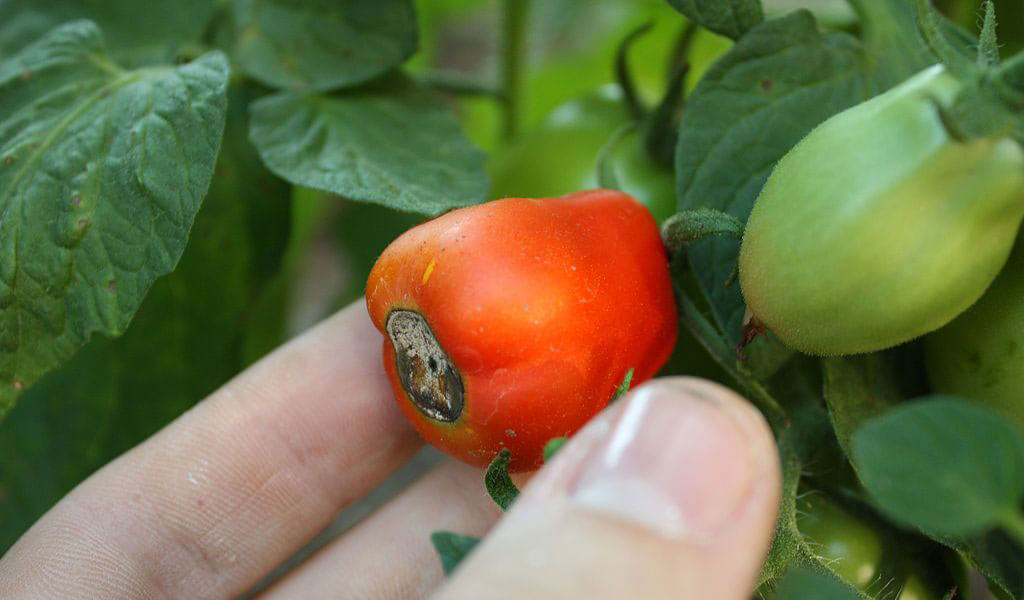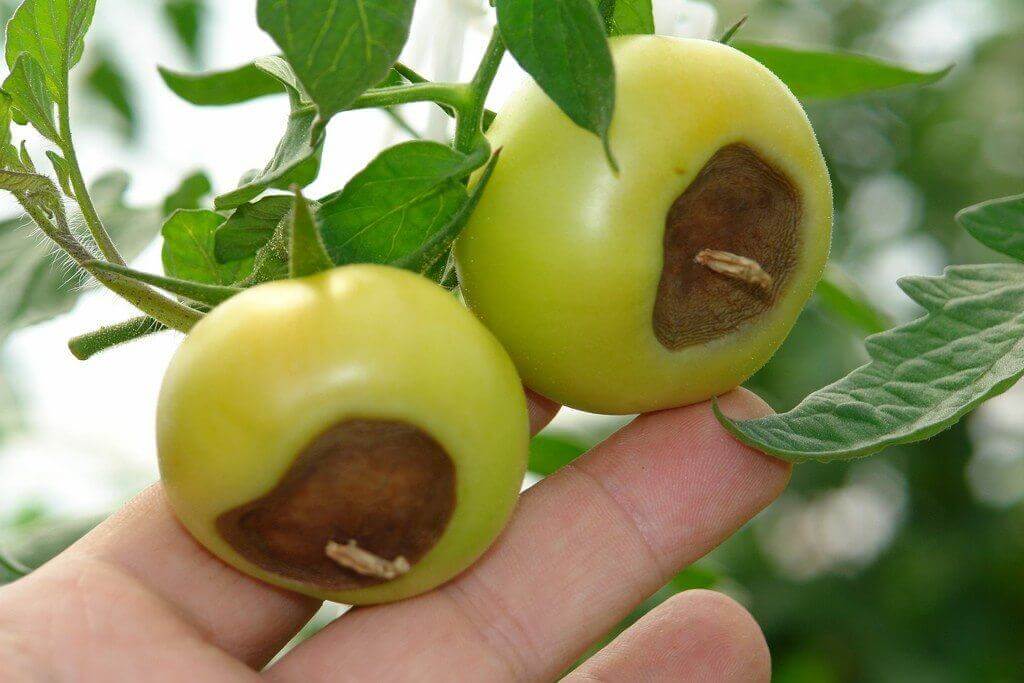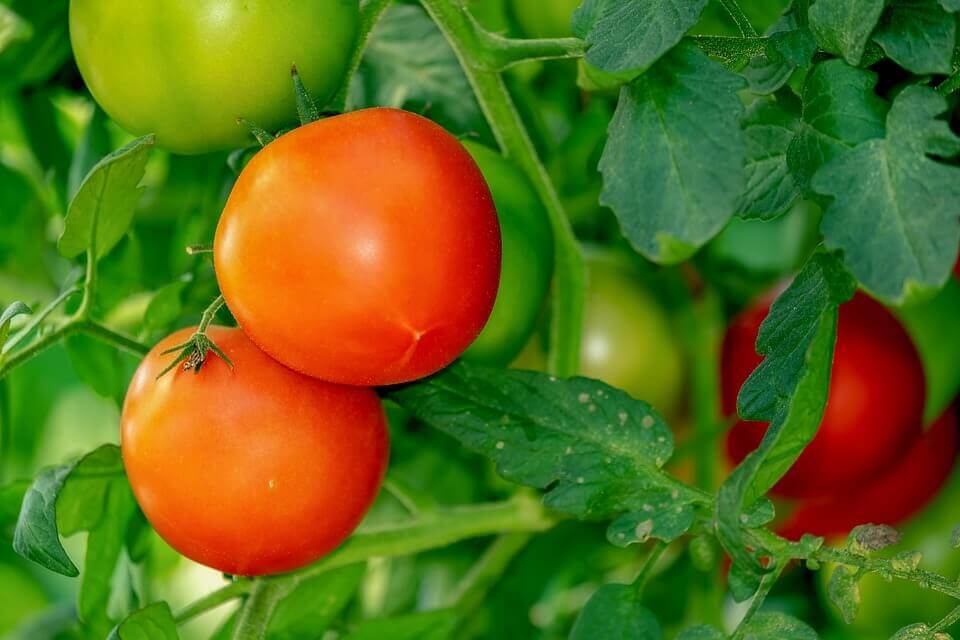One of the most distressing moment for home gardeners is to find the blossom-end of tomatoes sunken or rotten. Have you been there? Well, it happens mostly with the first seasonal tomatoes or on the ones that were planted and nurtured after a very dry summer. The condition is called blossom-end rot in tomatoes.
Do you also wonder what results in the blossom-end rot in tomatoes? We have got you all the information on this – from defining, elaborating, to controlling and preventing blossom-end rot
Blossom-End Rot in Tomatoes
Have you recently noticed the bottom or blossom of your tomatoes rotting? It is a common problem of blossom-end rot which is also seen rarely in peppers, squash, and eggplants, along with tomatoes.
It is a disorder that leads to the rotting or breaking down of the tissue of the fruit’s blossom end. It reduces the quality of your tomatoes and the overall produce from the plant.

Causes of blossom-end rot
The most common cause of blossom-end rot is a calcium deficiency in the plant. The lack of calcium can be a result of the soil’s low calcium levels or the soil that is not watered sufficiently.
The frequent fluctuations in the moisture of the soil affect the plant’s ability to absorb calcium from the soil negatively. And over the period, the calcium demand outgrows the supply, leading to the fruit tissues rotting and breaking down.
Not just underwatering, but there are other possible reasons for calcium deficiency during the formation of fruit, such as:
- Improper soil pH
- Excessive use of nitrogen-heavy fertilizer
- Damaged plant roots
- Increased soil’s salt levels
When taking care of your tomato plant, take care of these things to keep away your fruit from blossom-end rot.
The condition is normal to some extent when showing up in the first seasonal set of tomatoes because the plant remains under stress during the initial set of fruit.
Another situation of blossom-end rot is that it occurs in plants that are grown in containers (pots) because the soil is subjected to random fluctuations in its moisture.

When the rotten or damaged area of the tomatoes is small, you can easily trim it off before consuming or using in your dishes.
The control and prevention tips below will help you take better care of your tomato plants. But, let’s first understand what are the signs to look for to identify a blossom-end rot in tomatoes.
Signs of blossom-end rot
Generally, you will notice blossom-end rot appearing in the fruit that is still green and in the ripening stage. And, so the most affected fruits are the ones formed initially.
The disorder starts with a depressed, small, water-soaked area on the bottom of the fruit (blossom-end). It continues to cause more damage by turning into a dark bruise and keeps enlarges over time. Further, it gets sunken and takes the color of dark leathery brown. If not noticed in the initial stage of rot, more than half of your fruit gets affected.

Controlling and preventing blossom-end rot
As you know by now, the blossom-end rot in tomatoes is the result of calcium deficiency. Unfortunately, the damage to the fruit will not get treated.
So, if you are looking for an answer to ‘how to stop tomato blossom rot?’, there’s none yet. However, you can always prevent the rot from progressing and affecting other fruits ripening in the plant by following some tips, such as:
- Select the kind of vegetable cultivars that are known for their tolerance of calcium deficiencies and are less susceptible to showing blossom-end rot signs.
- Underwatering is a major reason behind the lack of calcium. Keep in mind, that both overwatering and underwatering are harmful to your tomato plant.
- You must follow consistent watering treatment, and when it is rainy, take care of the drainage system. The soil should dry out well. Remember, your plant will require about an inch of water for a square foot each week.
- To retain moisture in the soil, use mulches during the dry season.
- Keep a track of the soil pH regularly, specifically when you are using lime as the source of calcium for the plant.
- An ideal soil pH of 6.5 is suggested for growing several vegetables because it offers them the right nutrient uptake.
- Make sure you get your soil tested for any calcium deficiency before planting the tomatoes.
- If you have got soil from the store or nursery, there will be a sufficient amount of calcium already. But when growing in older soil, the calcium levels may be questionable.
- If the soil test confirms depletion in calcium levels, you can add an organic calcium source like finely crushed eggshells, lime, or bonemeal.
- Do not overfertilize your plant expecting it to balance the calcium levels. The excessive nitrogen, potassium, and magnesium in the soil can worsen the condition of the blossom-end riot. In most cases, it is not the soil deficient in soil but the inability of the plant to absorb sufficient calcium from the soil.
- Nevertheless, if you ever decide to fertilize the soil, use one that consists of more calcium. Choose a product with nitrate nitrogen over one with ammonium nitrogen.
- Do not dig or cultivate near the plant’s roots as any damage to the roots can lead to their inability to absorb minerals and water.
The Bottom Line
Blossom-end rot in tomatoes is a disorder that is caused by calcium deficiency of the plant. It is a sunken brown color rot in the blossom end of tomatoes, mainly the first round of fruit in the season. You may not be able to treat the rot once it affects the fruit but can prevent it from spreading to the fruit and the ones developing on the plant.






